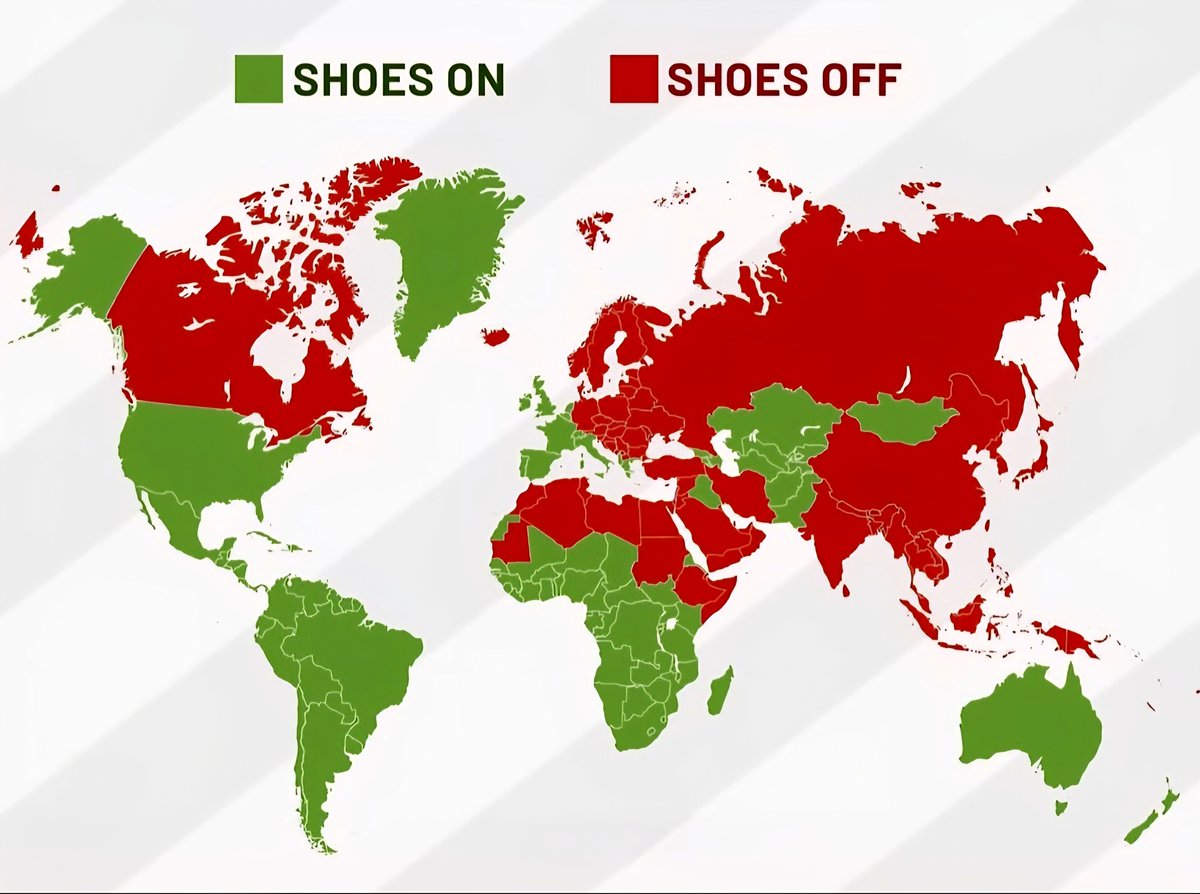Select Language:
Understanding Global Shoe-Related House Rules: Shoes On vs. Shoes Off

1. Cultural Customs and Household Expectations
Many cultures around the world have distinct norms about whether shoes should be worn indoors. In countries like Japan, Korea, and parts of Southeast Asia, removing shoes before entering a home is a deeply ingrained tradition. This practice helps keep indoor spaces clean and shows respect to the host. Conversely, in the United States and Canada, shoe-wearing inside the house is far more common, often linked to convenience and personal preference. The global map highlights these cultural lines, but as migration and international travel increase, household policies are becoming more fluid across borders.
2. Impact of Climate and Environment
Climate plays a significant role in shoe policies inside households. In colder regions like Scandinavia and northern parts of the United States, people tend to keep their shoes on to brave snowy, icy conditions. However, homes in tropical and subtropical regions, such as in parts of South America or Southeast Asia, more commonly adopt a shoes-off approach to prevent dirt, mud, and moisture from entering living spaces. The environmental considerations also influence the type of footwear people wear indoors—such as slippers or sandals—if shoes are to be kept on.
3. Home Hygiene and Health Practices
With growing awareness about indoor cleanliness and health, many families choose to remove their shoes to prevent the spread of germs, bacteria, and allergens. This trend is especially prevalent in households with children or elders. Countries like South Korea and Japan have long promoted shoe-free homes to maintain hygiene standards and reduce the risk of infections. Some households even implement strict cleaning routines to ensure that the indoor environment remains sanitized, regardless of shoe-wearing practices.
4. Lifestyle, Fashion, and Comfort Preferences
Modern lifestyle choices and comfort also influence indoor shoe policies. For many, shoes are an extension of personal style and identity, making it customary to keep them on. Athleisure shoes, luxury sneakers, or boots might be worn indoors for convenience or aesthetic reasons, especially in casual or social settings. On the other hand, some individuals prefer to switch into soft slippers or socks, prioritizing comfort or relaxation once inside.
5. Home Design and Architecture
Open-concept floor plans and minimalist designs are often better suited to the shoes-off philosophy, allowing for cleaner lines and more accessible spaces. Some homes are specifically designed with dedicated shoe storage areas right at the entrance, making it easier for guests and residents to adhere to the home’s policy. Conversely, larger homes with multiple entries might encourage shoes-on policies for ease of movement and convenience, especially when multiple people or guests are involved.
6. Influence of Hospitality and Hospitality Cultures
Hotels, bed-and-breakfasts, and other hospitality establishments lean toward shoes-off policies based on regional traditions or guest comfort. For example, many Asian hotels expect guests to remove shoes, providing slippers for indoor comfort. Meanwhile, American motels and hotels often retain a shoes-on policy, emphasizing convenience and speed for guests. These practices influence travelers’ expectations and can even shape household norms through cultural exchange.
7. Evolving Trends and Future Outlook
As 2025 unfolds, it’s clear that the shoes-on versus shoes-off debate continues to evolve, influenced by health concerns, cultural shifts, and technological advancements in footwear. Innovations in antimicrobial shoe materials and easy-to-clean flooring options are making it more feasible for households to keep shoes on without sacrificing hygiene. Meanwhile, the global community remains divided, with some regions embracing a hybrid model—shoes off in certain parts of the home, shoes on in others.
The image below illustrates how these traditions differ from one country to another, reflecting a fascinating mosaic of cultural practices related to footwear inside homes.

Whether you’re a staunch advocate for shoes off or prefer to keep your shoes on, understanding these regional differences fosters respect and reveals much about cultural identity and personal preference. As social norms continue to adapt in a rapidly changing world, it’s likely that hybrid practices will become more common, bridging tradition and modern comfort.






